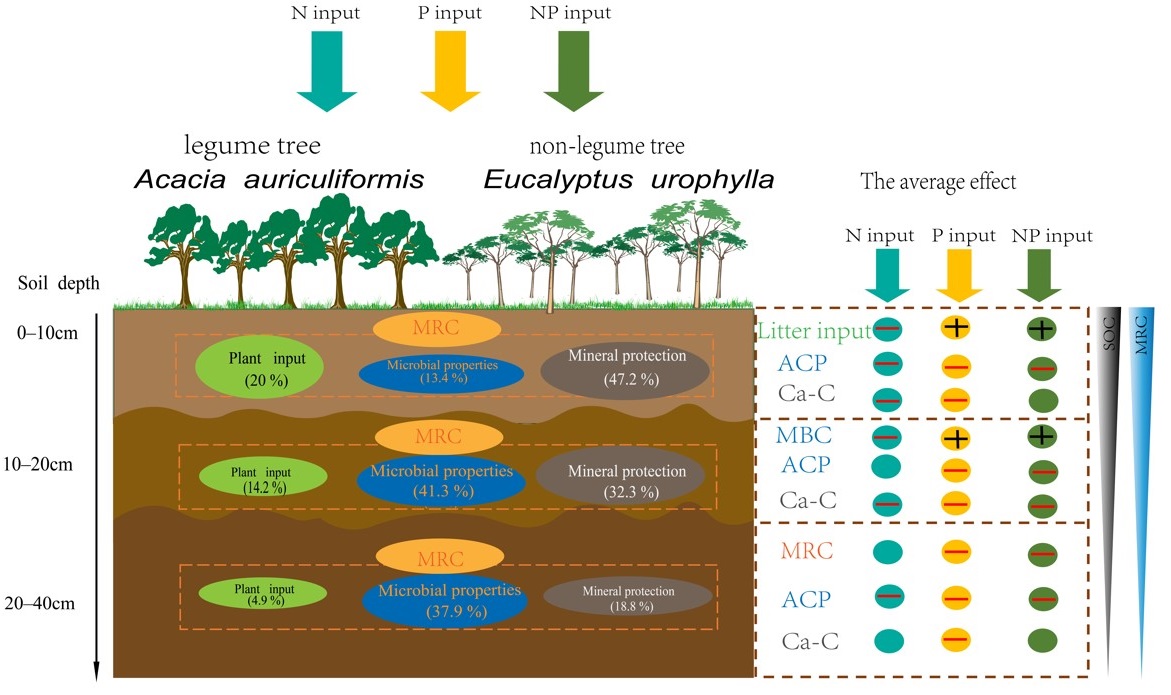News
Long-term nitrogen and phosphorus addition have stronger negative effects on microbial residual carbon in subsoils than topsoils in subtropical forests
Date: Mar 15, 2024
Forests take up approximately 45% of the organic carbon (C) in terrestrial ecosystems, with over 67% of the C retained in soil. Thus, a small change in forest soil C pool may have a significant impact on atmospheric CO2 concentrations. Highly weathered lowland (sub)tropical forests are widely recognized as nitrogen (N)-rich and phosphorus (P)-poor, and the input of N and P affect soil C cycling and storage in these ecosystems. Microbial residual C (MRC) plays a crucial role in regulating soil organic C (SOC) stability in forest soils. However, the effects of long-term N and P addition on soil MRC across different soil layers remain unclear.
To investigate the effects of N and P addition on MRC and its drivers across different soil layers, Dr. Linjie Fan and others from the research group of Ecosystem Management (Principal Investigator: Dr. Mianhai Zheng) of South China Botanical Garden, Chinese Academy of Sciences, conducted a 12-year of N and P addition experiment in two subtropical plantation forests (Acacia auriculiformis AA and Eucalyptus urophylla EU) located in Heshan, Guangdong Province, China. The results showed that N addition decreased MRC in the subsoil of EU, but had no significant effects on AA. Combined N and P addition reduced MRC in subsoil of AA but not in that of EU. The content of MRC decreased with increases in soil depth, and the effects of N and P addition varied among different soil layers. The mechanisms underlying the variation of MRC in different soil layers under N and P addition are distinct. Although plant C inputs and mineral protection play crucial roles in the variation of MRC in the surface soil layer, both microbial characteristics and mineral protection are important factors influencing MRC in the deeper soil layer. Understanding differential drivers of MRC across soil depth, particularly in deeper soil layers, is crucial for accurately predicting the stability and storage of SOC and its responses to chronic N enrichment and/or increased P limitation in (sub)tropical forests.
This study, entitled ‘Long-term nitrogen and phosphorus addition have stronger negative effects on microbial residual carbon in subsoils than topsoils in subtropical forests’, was published online in Global Change Biology. (https://onlinelibrary.wiley.com/doi/10.1111/gcb.17210)

Figure 1. Effects of nitrogen and phosphorus addition on microbial residual carbon (C) content in the soil.

Figure 2. A conceptual diagram illustrating the microbial residual carbon(MRC) in the three soil layers under the influence of nitrogen(N) and phosphorus(P) addition.
File Download: